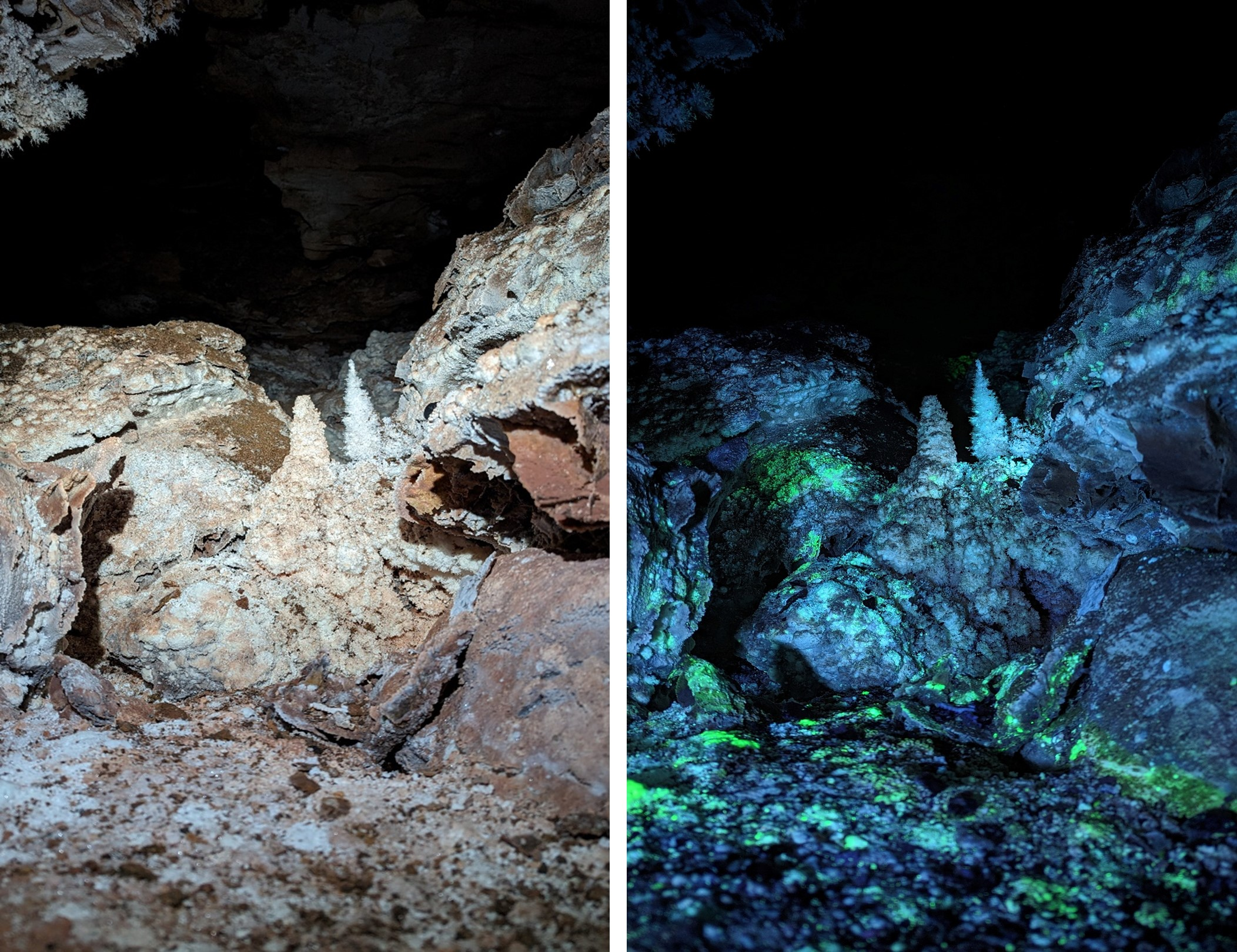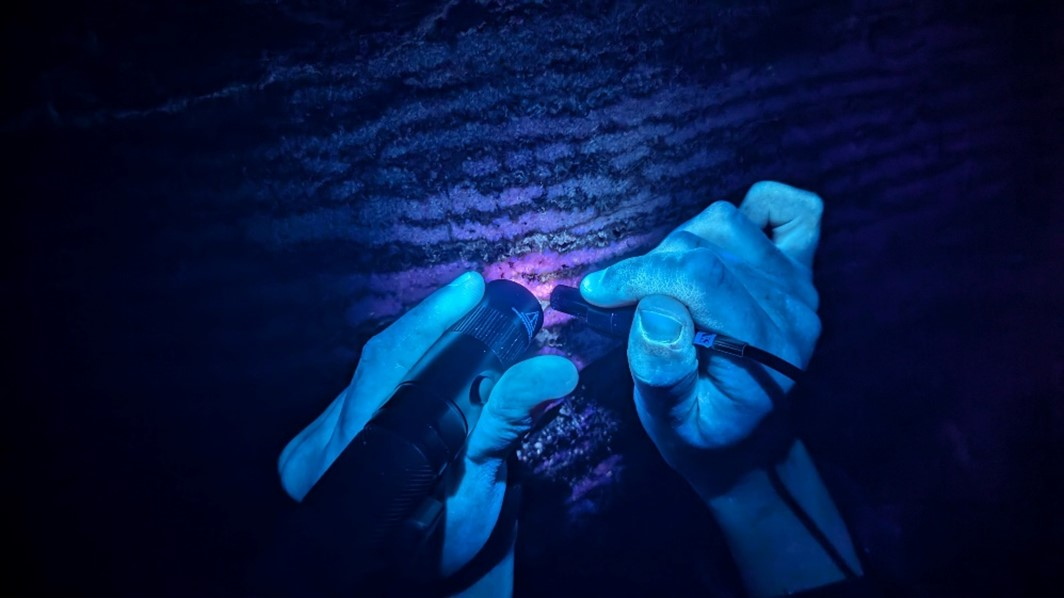Wind Cave, South Dakota, has interesting minerals, but is ill-suited for life, being too far underground for sunlight to reach. Yet its glowing colors revealed by black light could assist the search for life on other worlds, cave researchers have argued.
ADVERTISEMENT
Professor Joshua Sebree of the University of Northern Iowa led a team of students into Wind Cave and others like it to study the way water seeping through rocks above has influenced the mineral composition.
“The purpose of this project as a whole is to try to better understand the chemistry taking place underground that’s telling us about how life can be supported,” Sebree explained in a statement.
The team initially explored using torches operating at visual wavelengths but also brought black lights, whose UV radiation can stimulate fluorescence at wavelengths we can see.
“The walls just looked completely blank and devoid of anything interesting,” Sebree said. “But then, when we turned on the black lights, what used to be just a plain brown wall turned into a bright layer of fluorescent mineral that indicated where a pool of water used to be 10,000 or 20,000 years ago.”

Comparison of part of Wind Cave under normal optical light and ultraviolet.
Image Credit: Joshua Sebree
The cave’s most interesting minerals are often hidden under layers of dust, but the UV-stimulated glow shines through.
Manganese-rich waters in Wind Cave have produced zebra calcites, striped in ordinary light but glowing distinctively pink under black light.

Black and white stripes of calcite glow pink when exposed to black light.
Image Credit: Joshua Sebree
Colors like this allow the team to identify the chemistry of the cave without needing to damage it by collecting samples for analysis. Astronomers use the spectra from stars shining through planets’ atmospheres to identify the molecules present since we have no way of sampling directly. The same approach can be used on Earth, where we could collect specimens, but don’t want to because what we’re seeing is so rare and precious.
With abundant light available, Sebree’s team can identify details that would make teams trying to squeeze data from the tiny amounts of light from planets orbiting distant stars weep with envy. Nevertheless, the work is in its infancy, so Sebree has students working on projects such as making an autonomous spectrometer and assessing if the minerals pose any threat to explorers.
The work the team is doing could advance the search for life beyond the Earth in several ways. For example, the autonomous devices the team is developing save them effort, but could be far more important when we reach the point that robots are exploring underground conditions on other planets or moons. By revealing the way water does, and does not, transport vital nutrients, Sebree’s team also hopes to find hints of where to focus efforts in seeking life on other worlds. On Europa or Enceladus, any organic material would need to come up, not down, so allowances will need to be made, but the caves could still be our best point of comparison.
The caves are cold by our standards, presenting some challenges, but to make them a better model for the ice moons of the outer Solar System the team sometimes freezes areas with liquid nitrogen.
ADVERTISEMENT
In the process, Sebree has found what he thinks is evidence that the interactions of calcite and the stronger limestone contribute to cave formation, something he said has never been previously considered.
Sebree and his students are giving two talks and presenting three posters at the Spring Conference of the American Chemical Society on various aspects of the work.
Source Link: Caves In The US That Glow Under UV Light Could Help Us Find Life On Ice Worlds